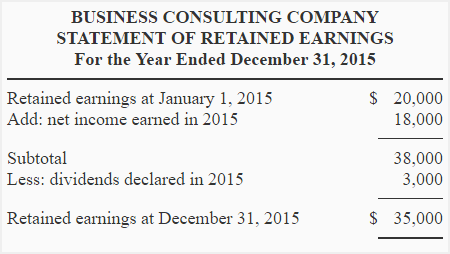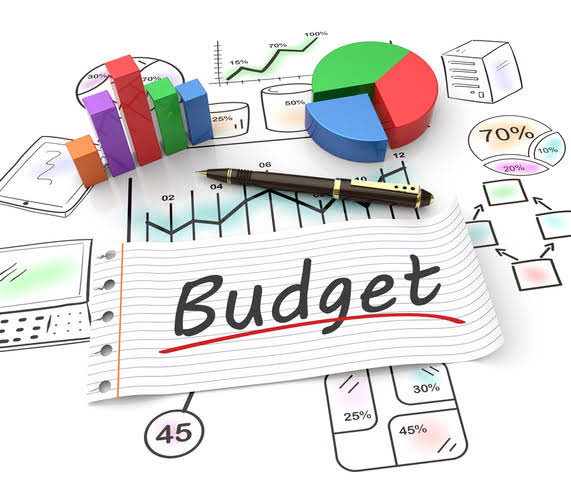What Is Standard Cost? Its An Estimate
Content

Standard cost also plays a role in evaluating staff performance. For example, by analyzing the difference between actual costs and standard costs, management can identify the factors leading these differences. The difference between the standard cost and actual cost is known as a variance. The presence of a variance indicates a deviation from what was recorded in the profit plan. If actual costs are greater than standard costs, management can likely anticipate a lower profit than expected. If actual costs are less than standard costs, however, management might anticipate a higher profit than they originally planned for. Nearly all companies have budgets and many use standard cost calculations to derive product prices, so it is apparent that standard costing will find some uses for the foreseeable future.
Best home warranty companies in Dallas (2021) – MarketWatch
Best home warranty companies in Dallas ( .
Posted: Mon, 29 Nov 2021 20:42:24 GMT [source]
This highly flexible and dynamic approach allows us to define what variances matter and set internal targets for material prices, volumes, product cost, etc. But suppose there are years where unusual activities in either the standard-setting or actual product costs created unrealistically high or low costs. As there is no way to “fix” bad standards, most analysis will have to be done in Excel to caveat and exclude miscalculations. Even corporate expenses should be allocated to product costs, especially if they vary across lines. They can vary by risks of product liability and environmental damage, or by antitrust concerns across different categories of products.
Standard Cost Calculation
Companies in the global market cannot effectively use standard cost accounting due to this major drawback (Cheatham &Cheatham, 1996). If your standard costs are too low , it would have an adverse impact on gross profit. This is because your pricing decisions are based on what you currently think it costs you to produce. Many issues with standard costing data are often the result of how your financial systems are configured. And even within sophisticated systems, these metrics must be tied to your financial/accounting system to be valuable.
Is not the best fit for limited product production runs with a few established products for which the production profitability model is the only model needed. This is an example of a product standard cost report with the estimated technical specifications of the product. Available machine production hours could be 24 hours a day for five days over 50 weeks, which is 6,000 hours per year. However, if the machine is only usable for an average of 85% per year for 10 years, the total would be 51,000 hours.
What is RSQ in standard costing?
Revised Standard Quantity (RSQ) If Actual total quantity of inputs were used in standard proportion.
Therefore, a company’s overhead allocation scheme may not correspond to the underlying production process or to the demands individual products make on the enterprise’s resources. Auditors won’t question cost-of-sales or inventory valuation estimates merely because the company has used an aggregated, simplistic method for assigning overhead costs to products. As long as the split of costs between goods sold and goods still in stock is fairly accurate, in aggregate, the needs of financial reports will have been met. As CFO at Bullard, I was able to move away from capitalizing production costs on a part-by-part basis to capitalizing production costs in total using a simple journal entry. The primary benefit of lean inventory valuation at Bullard was the elimination of unnecessary work.
Using the two‐variance approach, the controllable cost variance shows how well management controls its overhead costs. If a volume variance exists, it means the plant operated at a different production level than budgeted. For the Bases, Inc., the total overhead variance is $485 unfavorable. It consists of a $717 unfavorable controllable variance and a $232 favorable volume variance. An unfavorable controllable variance indicates that overhead costs per direct labor hour were higher than expected.
Start Your Business
A standard cost is one that a company expects at the outset of a year under a normal level of operational efficiency. Standard costs are used periodically as a basis for comparison with actual costs. A complex system of variance calculations is an integral part of a standard costing system, which the accounting staff completes at the end of each reporting period. If the production department is focused on immediate feedback of problems for instant correction, the reporting of these variances is much too late to be useful. Continuous Improvement comes from users who learn how to transact more appropriately; then you gain the benefit of harvesting better costing information to work with.
In order to effectively analyze the applicability of standard cost, it is important to understand how the standards are set. In setting up standards for direct materials, we consider several issues; quality, quantity and price of the material. The quality standards to be maintained for a given product are decided and set. The production department then sets up the quantity standards. Historical records and projection for future market conditions act as a guide for setting the quantity standards. The final aspect involves the determination of the standard price. The material cost is comprised of the cost of purchasing, storage, discount policy and transportation of the materials.
Direct Materials Purchased: Standard Cost And Price Variance
When you access this website or use any of our mobile applications we may automatically collect information such as standard details and identifiers for statistics or marketing purposes. You can consent to processing for these purposes configuring your preferences below. If you prefer to opt out, you can alternatively choose to refuse consent. Please note that some information might still be retained by your browser as it’s required for the site to function.

Provides clear views of actual costs throughout the manufacturing process. Actuals are compared against historical costs for performance management. Standard costing provides the illusion of control while requiring resources, time, and energy than alternative costing methods to implement and manage.
Can Standard Costing Data Be Used To Develop Key Performance Indicators Kpis?
Is your manufacturing operation using Standard Cost or Actual Cost to value production costs? Are you wondering what the benefits would be if you switched to a Standard Cost valuation of the production of your products? In this blog post, I’ve listed the advantages and disadvantages of using Standard Cost to help with your analysis. Historical costs are costs whereby materials and labor may be allocated based on past experience. Predetermined costs are computed in advance on basis of factors affecting cost elements.

When inventory levels reach days of inventory, the financial risk of inaccurate inventory valuation decreases significantly, and the risk of material misstatement of profit is reduced. Manufacturing companies that adopt Lean methods need to continually control production operations to make efficient use of materials, labor, and overhead. Historically, production controls have come from standard costing systems. Let’s take a quick look at how those systems developed and how Lean companies can replace them. Labor quantity and price standards set the standard time to complete one unit of product and the standard hourly wage rate. Labor quantity standards in larger companies are determined by time and motion studies.
Standard Costing
The company persists in the losing strategy because executives have no alternative sources of information to signal when product costs are distorted. Only after many years of declining market share and reduced profitability will managers learn how erroneous product costs led to poor product mix and pricing decisions. For operations under computer control, the digital data can be captured to record what, when, and how much was produced. Companies no longer need to collect production data with stopwatches, time clocks, and clipboards. Automatic bar-code reading of parts combined with local area networks permit continual tracking of parts and operations. Cost control systems can record these data and provide frequent, accurate reports on actual output and resource consumption.
- The variances between standard labor rates and actual labor rates, and diminishing profit margins will have contributed to this decision.
- One cannot generalize about the ease of designing adequate operational control and product cost systems.
- Mix and yield variances also can be calculated for the cost elements.
- Further investigation should reveal whether the exception or variance was caused by the inefficient use of materials or resulted from higher prices due to inflation or inefficient purchasing.
- If there are significantly large unfavorable cost variances, then a cost accountant goes to the shop floor to question employees about possible reasons for the higher than expected costs incurred.
- When managers have controlled costs through the use of the standard costing system, the actual costs in the future should be close to the standard costs.
Widely available and powerful tools like PowerPivot or PowerBI can process massive numbers of records and perform any level of calculation detail, save time, and provide insights. Standard costs are developed before the new fiscal year starts through a series of steps by the accounting team.
Standard costs include any resources used in normal operations to manufacture the product. This may include expenses linked to materials, labour, and overhead. Calculating inventory using standard costs is easier than using actual costs.
Standard costs higher than actual costs result in overstated ending inventory. One way to offset under-absorbed overhead is to produce more , which is a terrible way to put company cash on the warehouse shelf but have better cost accounting results and less management whining. The difference between actual costs and standard costs is known as “variance”. There is a favorable variance when actual costs are less than standard costs. An standard costing systems unfavorable variance occurs when actual costs are higher than the standard. Analysis of variances between standard costs and actual costs provide vital information useful in improving and maintaining efficiency of operations. While the typical operational control system segregates costs incurred at each responsibility center, a good product cost system should report expenses incurred across the organization’s entire value chain.
What is variance analysis PDF?
Variance analysis can be summarized as an analysis of the difference between planned(standard) and actual numbers. The sum of all variances gives a picture of the overall over-performance or under-performance for a particular reporting period. … Variance analysis can be conducted for material, labor, and overhead.
Production works with purchasing to determine what material will work best in production and will be the most cost efficient. Sales will also help decide the material in terms of customer demand. Your standard costing data can be leveraged to develop Key Performance Indicators which can be valuable in measuring past performance. But what’s more important is using this data to establish your Key Performance Drivers . Your KPDs help you create measures of daily activities that are required to produce those desired KPIs. This is one of the most critical benefits of an effective, timely root-cause analyses of manufacturing variances.
The negative balance at the time was blamed at the cheaper goods supplied by the foreign competitors. Some of the factors established for the lower costs were; cheaper labor, better automation systems and less diversity of products. In the modern market, it is thus imperative for companies to use a cost accounting system that enable them operate effectively in the global market. Costing involves the identification and recording the monetary value of all the resources involved in the production process.
Can You Power And Heat Your Pool With Solar? – Energy Matters
Can You Power And Heat Your Pool With Solar?.
Posted: Wed, 01 Dec 2021 03:26:31 GMT [source]
The $232 volume variance indicates an over‐application of fixed costs. This occurred because actual production is higher than the budget. Remember that as more units are produced, fixed costs per unit decrease. However, the predetermined overhead rate is established when the budget is prepared, and the same rate is used throughout the year regardless of the actual number of units produced. The price variance is favorable if actual costs are less than flexible budget costs. The quantity variance is favorable if flexible budget costs are less than standard costs. The total variance is favorable if the actual costs are less than standard costs.
- Explain how materials, labor and factory overhead standards are set, including the types of people involved and the method used.
- Toward the end of the fiscal year, standards often become less reliable because time has passed and the environment has changed.
- It is a type of cost accounting mainly used in the manufacturing sector because it is easier to allocate costs directly to products being produced.
- Existing financial accounting rules require that basic R&D be expensed each period.
- Often this is determined by examining the specification or “build sheet” for the product being made.
The result does not exactly match the actual cost of inventory, but it is close. However, it may be necessary to update standard costs frequently, if actual costs are continually changing. It is easiest to update costs for the highest-dollar components of inventory on a frequent basis, and leave lower-value items for occasional cost reviews.
In the 1920s, the Ford Motor Company was the first mass producer to champion and use Frederick Taylor’s ideas of scientific management. Since then, business schools worldwide have taught it as the preferred system to control production efficiencies and costs. Standard cost variance reports are usually prepared on a monthly basis and often are released days or even weeks after the end of the month. As a result, the information in the reports may be so stale that it is almost useless. Timely, frequent reports that are approximately correct are better than infrequent reports that are very precise but out of date by the time they are released.
Author: Laine Proctor